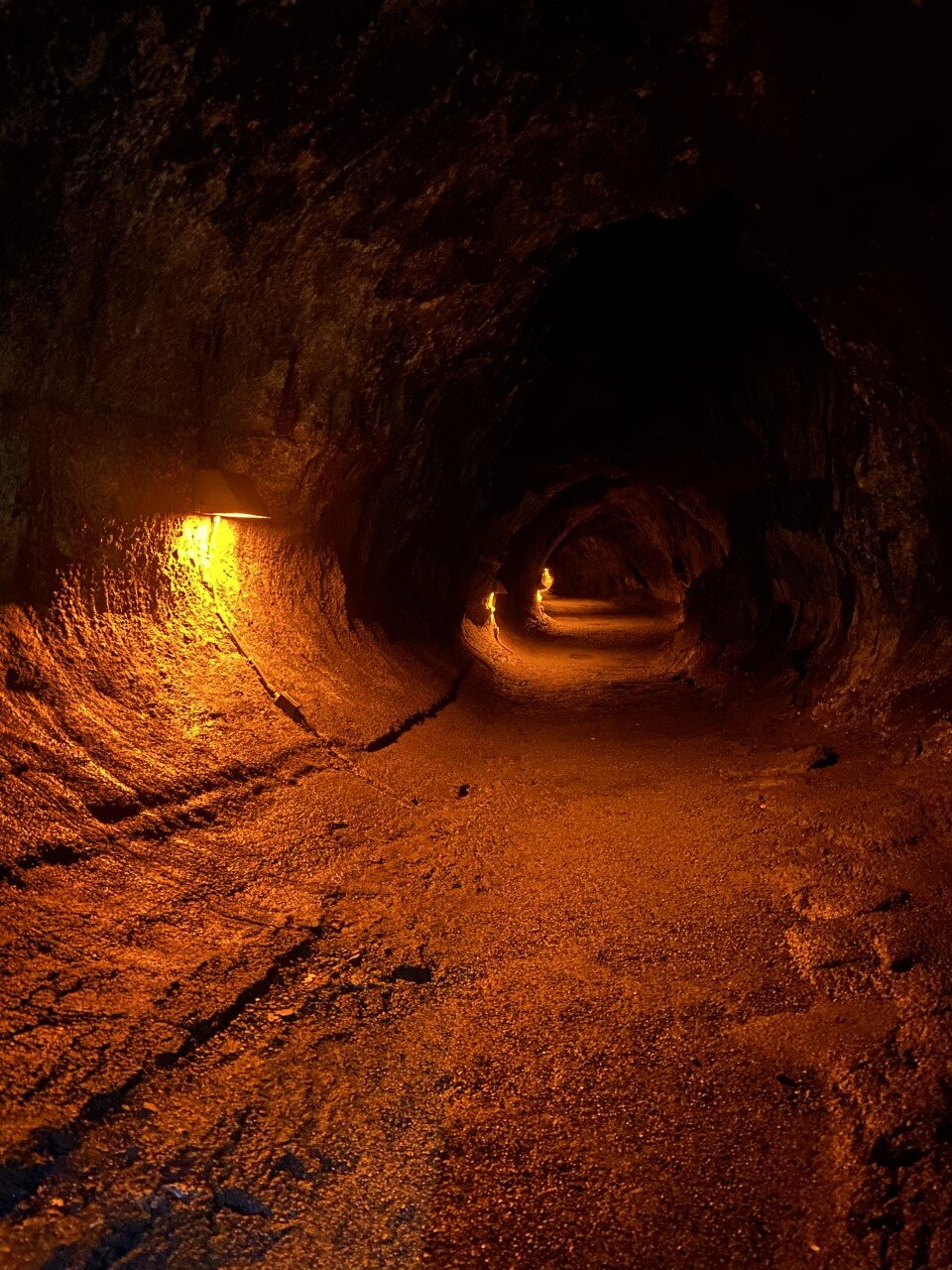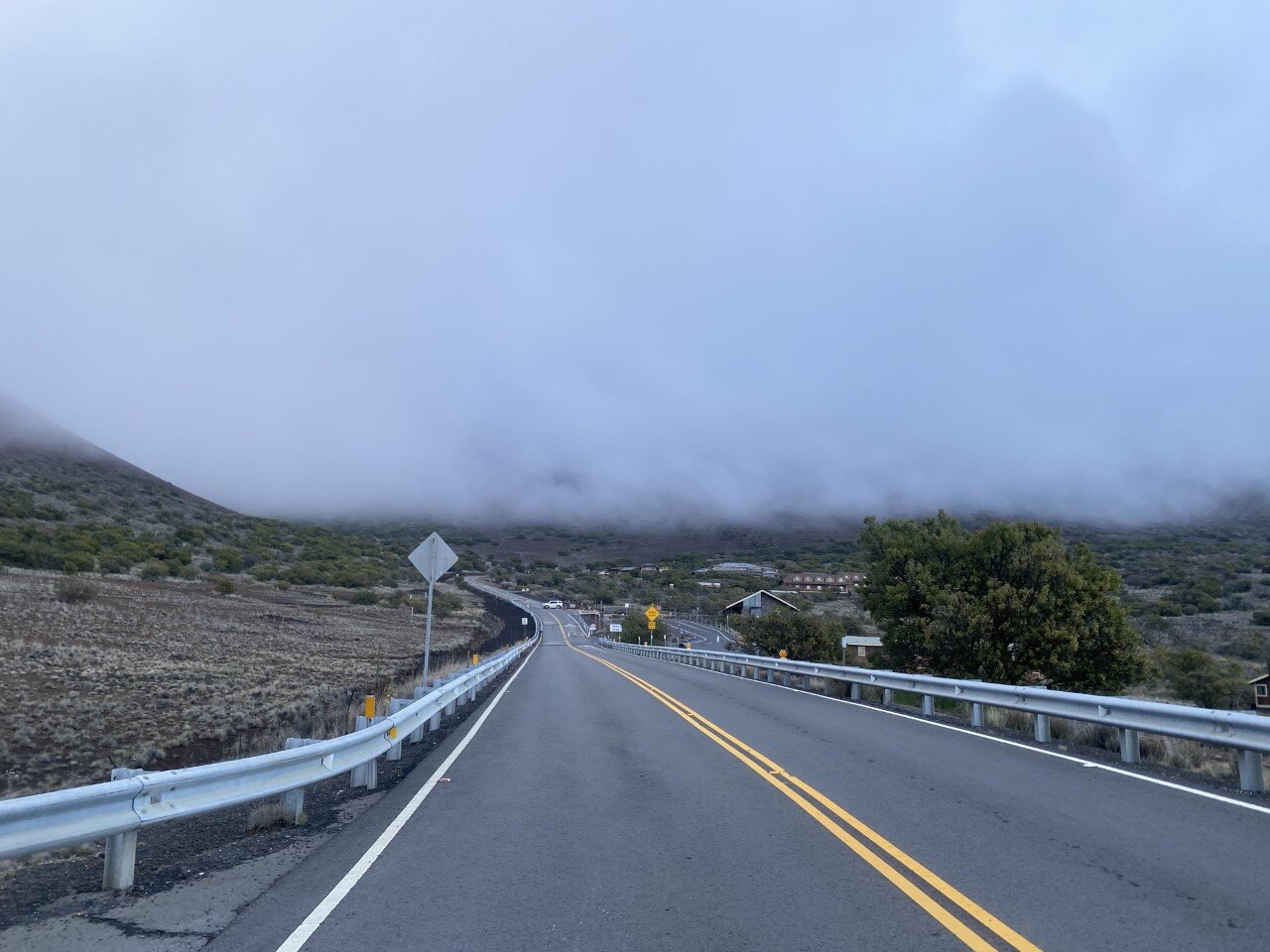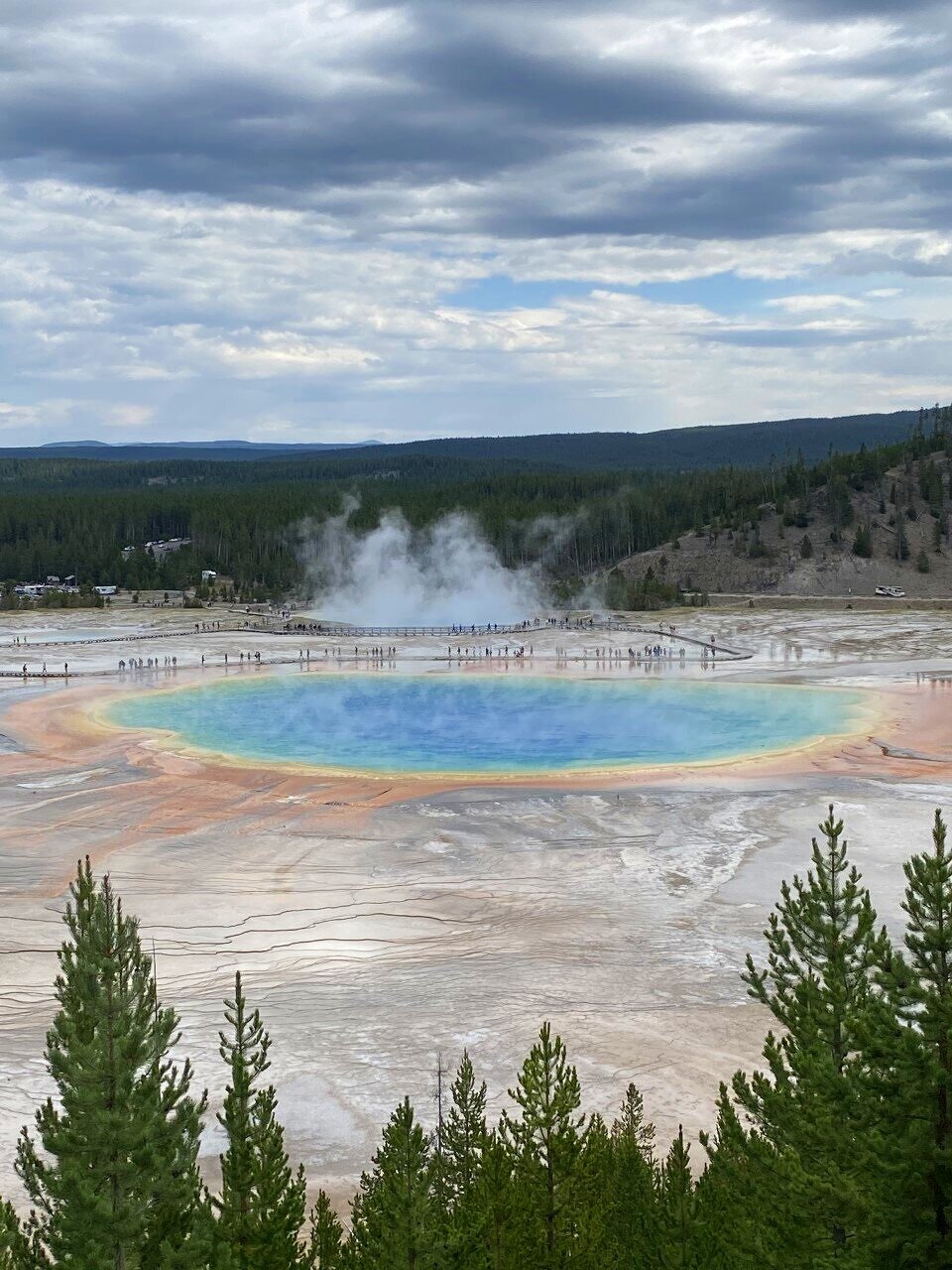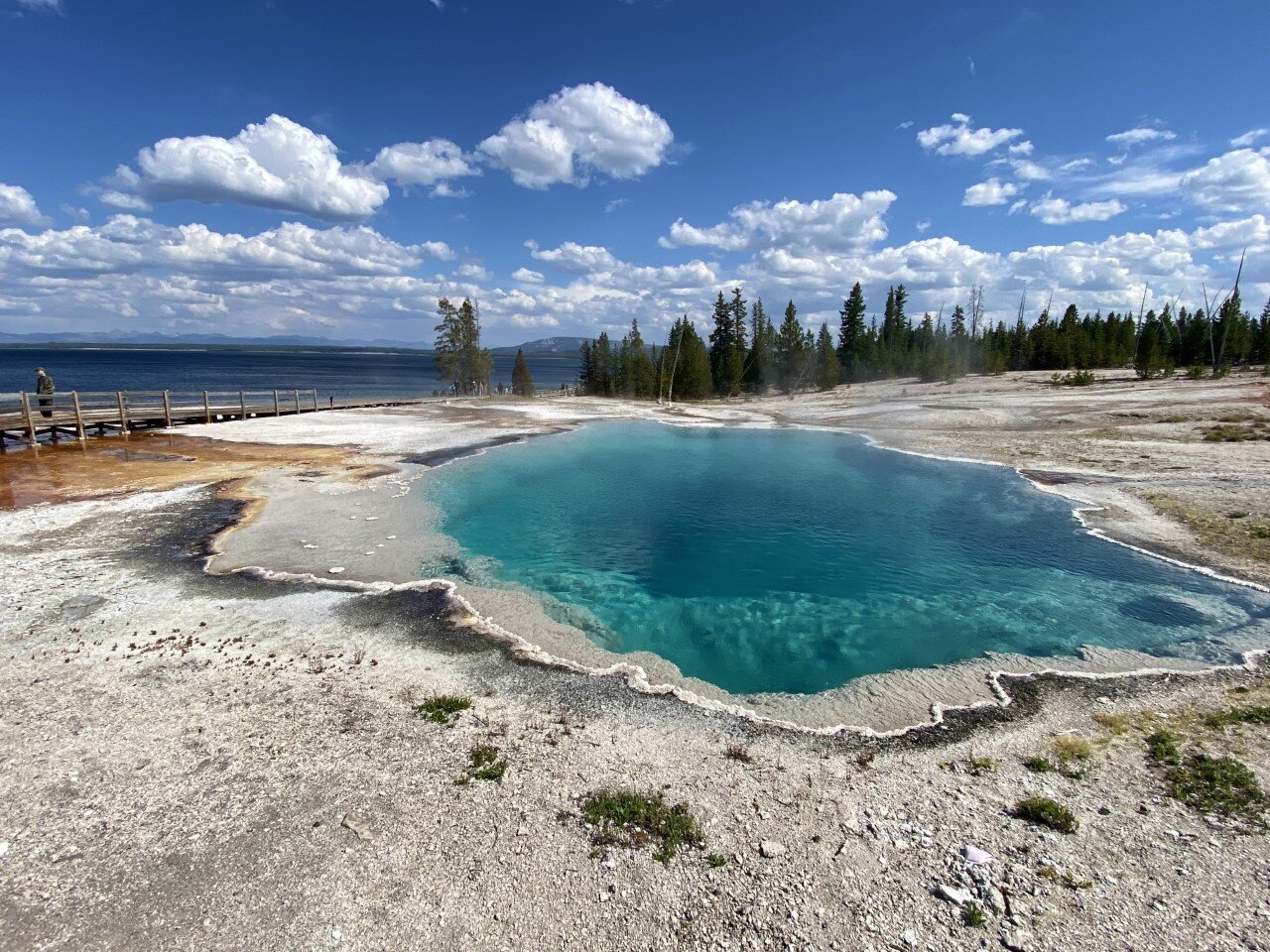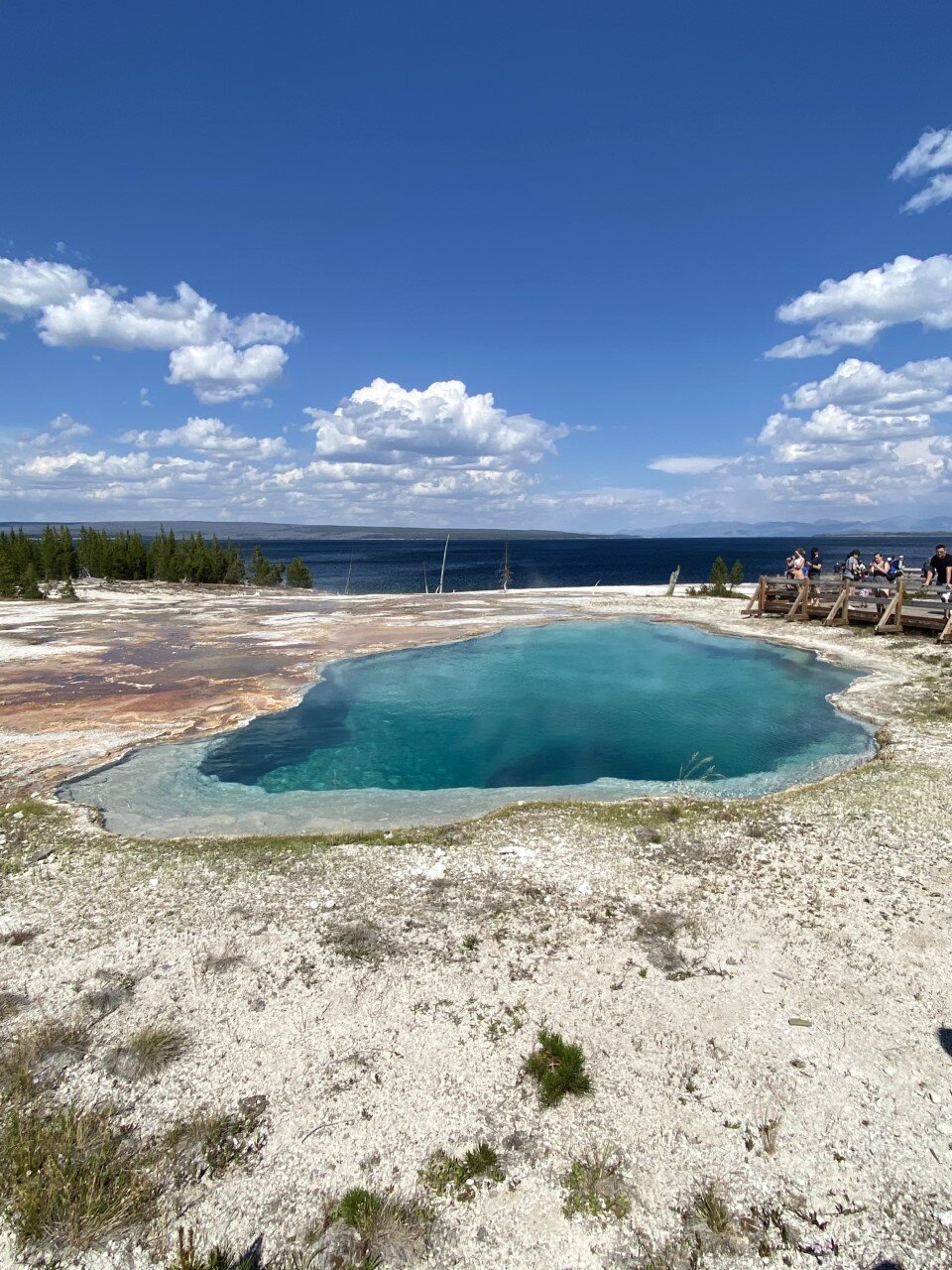7 Lessons I’ve Learned Road-Tripping Across the U.S.
Here’s what I’ve learned from road-tripping across the U.S.
1. Things will go wrong with…
I absolutely love travel. Maybe it’s because my parents prioritized it when I was a kid –whether it was a trip to Disney World or my dad taking us through the woods off the sidewalk path in local parks. Regardless, I love exploring new places.
I especially love being in a foreign place. A language I don’t understand, food I don’t know how to pinpoint the ingredients for, and people who look differently than I do. When it came to traveling, I often flew to new places that were walkable because I didn’t have a car myself. When I purchased my first car after graduating college, I packed up my belongings and set off on a drive from Dallas to Massachusetts with my dad.
My dad and I’s first stop on our road trip up to MA: Hot Springs National Park in Arkansas. This overlook hike is a must on your visit!
The drive itself takes a little over a day, but we split it up over a few days, staying in national parks along the way. Since then, I’ve ridden an Amtrak train from Denver back to Massachusetts, driven all around New England, and made my way around the U.S. on three longer road trips (to Missouri, Georgia, and Montana).
In all those hours spent in the car and the days spent on the road, I’ve learned a lot about preparing for a trip.
A trail view from Voyageurs National Park in Minnesota on the return home from our road trip last summer.
Here’s what I’ve learned from road-tripping across the U.S.
1. Things will go wrong with the perfect itinerary.
Anyone who knows me knows I’m a big planner. I use a color-coded Google sheet with multiple tabs varying from transportation, to housing addresses to packing lists, and sights to see. I love knowing I’ll see most of what a place has to offer by planning in advance.
However, there are things you can’t plan for. You can’t plan for forest fires to bring smoke to mountain ranges from the state over. You can’t plan for your pre-made food to go bad because the outside heat melted your ice sooner than expected. Since then I’ve learned to not pre-make several servings of mac and cheese to save time later since we ended up throwing it away.
Tip: Make a list of your non-negotiables, meaning the things you must do or places you absolutely must see. If you want to see the Mesa Arch in Canyonlands at sunrise and it’s an absolute dream of yours, then make that a priority. Maybe skip another attraction, or grab breakfast instead of cooking it if you’re short on time. Take out something in your “nice to do” bucket to ensure you fill up your “must do” bucket.
A year and a half ago, our flights to Kansas City were canceled due to the weather in Boston. We rented a car and turned the Conference Championship game into a road trip. A perfect example of how we couldn’t stick to the itinerary, yet it turned out to be an amazing weekend. We were even able to make it to Cuyahoga Falls in Ohio and the Gateway Arch in St. Louis since we drove!
2. Always add two hours to your estimated time of arrival on your GPS.
You can’t plan for NY/NJ traffic to add two hours to your drive. Okay, maybe you can because it always feels like driving through this area adds so much time.
This is just one example of something that’s gone “wrong” on my trips in the past, or not according to plan. I’ve learned to add about two hours to the GPS. You don’t realize how much time you actually spend getting gas, buying an extra snack, and using the restroom even though you thought it’d be a quick minute to use the bathroom.
3. When planning, add in filler time. Or be okay with taking a detour.
Since we’re on the topic of time and planning, it’s important to add in time for the unexpected. On one of our trips, we were driving through South Dakota and saw sign after sign for a place called Wall Drug. The signs were such a hoot, we detoured and stopped by this tiny little western town. It ended up being one of the highlights of our drive through South Dakota! Had we not planned for additional time to get to the Badlands, we would’ve felt a need to stick to the road. Thus, missing this cool little spot.
When we made it to the Gateway Arch, our only plan was to view it from the exterior, take a few pictures, and continue our drive to Kansas City. We decided to take a detour, head inside, and book the last tour of the night. The tour took us up to the top of the Gateway Arch for this incredible view for sunset and back down in forty-five minutes. Totally worth it.
4. Double check your bookings a week before your trip. Or at the very least, the night before.
You may have planned to hit the road at 10 AM as soon as you pick up the rental car. That’s part of your itinerary, so it only makes sense. That is, until, you arrive at the rental company and they tell you you booked your car for the day before and since you didn’t pick it up, they rented it out to someone else.
Turns out, you aren’t leaving at 10 AM as you planned. This could have been easily avoided if I checked with the rental company a few days earlier to confirm the dates, or reviewed the booking email confirmation. This also goes for any boat tours or planned excursions you have, along with any campgrounds you reserved. Last summer I mixed up the dates more than once, which left us car camping under the stars in the Tetons (not mad about it), but it meant our KOA campsite in Yellowstone was given to someone else so we didn’t have a home base in Yellowstone.
Here’s the view from our campsite in Yellowstone, overlooking Yellowstone Lake. Not the worst way for plans to go when you mess up reservations.
5. If you’re using a rental car, get the insurance.
Everyone tells you this and you never listen. And when I mean you, I mean me. Almost everyone I have talked to about road trips says nine times out of ten, their rental car was fine. However, there’s always that one time. Ask anyone who travels on the road and they’ll tell you the trouble they had with their car or the animal encounter they had that no one wished for.
This goes back to earlier where I mentioned you probably won’t remember paying for things you forgot to bring. You won’t look back on your road trip thinking how much money you wasted on insurance. I add in the insurance when budgeting so that I don’t get overwhelmed when it comes to the total cost of a rental.
Tip: Book your rental in advance. If possible, pay upfront so your rental is reserved if you’re late and the cost is often cheaper. I use websites like Priceline to find the cheapest option. I also always double check for two things: 1) unlimited mileage (almost all rentals are, but vans/RVs often charge over 100 miles/day) and 2) restrictions.
More on restrictions - In Maui, most rental car companies don’t cover you if you drive a specific part of the Road to Hana. On a map, that part of the road looks like it saves you a great deal of time, but the conditions aren’t ideally suitable for driving.
On the Big Island, companies also don’t cover your drive to the summit of Mauna Kea. Always read the fine print or simply ask the representative which roads or attractions may be off limits to not lead to financial issues later.
6. You will forget things. Just buy it along the way!
I used to get so stressed about forgetting something, as if there wasn’t a store along the way at some point to pick it up. In the grand scheme of your road trip, one purchase of q-tips won’t break your budget, and you surely won’t remember spending the money on it in the long run.
My very first road trip with my dad across Texas heading toward Big Bend National Park back in 2016. It’s safe to say I’ve been enjoying these drives for quite some time.
7. Embrace life on the road.
What initially was frustrating about mixing up dates and losing out on a campground in Yellowstone led to us finding out that each day Yellowstone offers first come first serve campsites. Had we had our original campground, we never would have landed a campsite directly across Yellowstone Lake, waking up to neighbors like elk casually walking past our tent.
Tip: Talk to locals or park rangers when visiting somewhere new. We pulled over to ask a ranger about campsites to snag the one I mentioned above.
These are just a handful of the lessons I’ve picked up driving across this beautiful country, and I’m sure there are plenty more for me to learn.
What lessons have you learned while traveling? Would you add any to this list?
A Guide to Hawai’i Volcanoes National Park
My 32nd national park!
I knew the least about Big Island prior to visiting. All I knew was that Volcanoes National Park resided there, and so I needed to visit. That’s the beauty of wanting to achieve a list. Sometimes, in order to cross a place off, you find unexpected beauty. We stayed in this beautiful Airbnb off the grid right outside the park immersed in the rainforest. I highly recommend it if you’re planning to spend time at Volcanoes!
We headed into the park our first night, headlamps in tow. I usually try to limit my night explorations in unknown places, but seeing this park at nighttime is an absolute must.
The lava glow at Volcanoes National Park.
We drove into the park near the Kīlauea Visitor Center to explore the Kīlauea Overlook. The parking lot was nearly empty on this mid-April evening, and we walked the minute up to the overlook. We weren’t entirely prepared for what we were about to see, or in this instance, not see.
When researching this park, I knew an eruption occurred a few months earlier in December, and I was hoping to catch a glimpse of lava up close. I wanted the feel the radiating warmth of the lava against my skin, but instead I only felt the cool air bringing my body to a chill. If you make it out to this park at night, bring a jacket. Or two.
When we walked up to the Kīlauea Overlook, a hazy reddish hue like a gentle brushstroke of acrylic paint just touching the canvas for the first time caught our eye. “That’s it?” My friend remarked.
Instead of lava flow, we were met with lava glow. The glow appeared a deep orange and red blend on camera. A rarity for the picture to be more astounding than the image in reality. Below is the daytime view.
We explored the park in more depth the following day. We discovered another viewpoint at Volcano House that would be neat to see under a starry sky. We walked along the crater rim. Truthfully, I thought there would be hiking in this area, but all the sidewalks are very accessible and were all .2 or .3 miles of walking. Once we felt we had seen the crater enough, we drove onward to the Thurston lava tube. Another short traverse led us through a scenic rainforest and into a lit cave. At night, the lights are off if you want the full cave experience.
Across the street from the lava tube is a beautiful short trail as well with vistas of a crater floor you can actually hike down into and on!
If I come back to Volcanoes one day, I would love to walk across the crater floor at the Kīlauea Iki Crater Overlook. It’s a 400 foot descent and a little over 3 miles of hiking down. The birds-eye-view is above.
We hopped back in the car and headed down the Chain of Craters Road – a road lined with lava rock. The final destination on this road would lead us to the ocean. I love variety in a national park and like Olympic in Washington, Volcanoes provided us with desolate, dark lands contrasted a few miles away with the glimmering ocean.
A .6 mile out-and-back along a road led us to Cliffs of Moher, Ireland views. Also known as the Hōlei Sea Arch on the Big Island. The arch formed from waves slowly eroding it, which is neat to consider it is constantly changing. This little ocean visit was a highlight of the park for me particularly because of the road to get down to it, and eventually, back up.
Hōlei Sea Arch at Volcanoes National Park
Our final adventure led us to the summit of Mauna Kea, one of Hawaii’s largest volcanoes. From its base underwater to the peak, it’s over 33,500 feet, meaning it’s taller than Mt. Everest (if you count what is submerged in water). Pretty neat, right?
There is an observatory 13,803′ feet up to watch the sunset from. We made it up 9,000 feet where we were met with this worrisome sign (the eerie fog didn’t help) and a guard along the road.
And to think, we were just by the coast with the ocean breeze.
We drove from sea level to this point in about an hour and a half, so the sign makes sense. The remainder of the road can only be traveled with AWD, and most rental car companies won’t cover the damage from this road specifically.
The ominous road that leads to the guard checking if you have AWD or not.
So here’s the sunset from our little spot 9,000 feet up in the sky.
Our sunset above the clouds, but still a few thousand feet below the summit.
Did you have Volcanoes National Park on your list of places to visit? What part of the park can you not wait to explore one day?
Planning a Trip to Hawaii
Tips to get started planning your island getaway!
How to Plan a Hawaii Trip: 4 useful tips to get started planning your island getaway!
1. Narrow in your days.
As a teacher, I’m limited to what times of year I can travel. However, that isn’t the case for everyone. Consider if you can possibly fly out on a Thursday, when flights are cheaper. Gauge whether you will need time to recover from the time changes and consider if a night in California is affordable and worthwhile for you. It turned out that our flights were cheaper if we flew direct to California, stayed the night, and flew out the following morning. A win-win.
2. Map out your experiences.
We knew we wanted to bike down from Haleakalā National Park in Maui, but we also wanted to night dive with manta rays on the Big Island. These excursions are not offered daily, so we needed to map out what days and times they were offered and go from there.
My favorite way to map things out visually is with Google sheets. I have used the same template for trip planning for a few years now thanks to a tech savvy friend of mine. Here’s what our first two days in Maui looked like, mapped out: times, dates, experiences included.
If you’re interested in the template above, subscribe to my blog at the bottom of this page, and I’ll send you my template for free!
3. Read up on safety precautions.
Since we’re still living in a Covid world, it’s important to minimize any surprises (some are inevitable!) while traveling. Going into Hawaii, I knew we would need a negative Covid test to enter Maui. Here’s what we needed to do:
Create a Hawaii Safe Travels profile.
Enter in all the information for where you will be staying. Since we were island hopping, we spent a bit of time entering all of this in.
When booking a Covid test, we read through Hawaii’s Trusted Partners to determine which ones were close by. We landed on CVS because of convenience, but it did cost us $139.
After receiving a negative test, we uploaded it to the Safe Travels profile. The website suggests you print a copy, but I strongly recommend you do. If for some reason your QR code doesn’t get sent to you (which it did for one of my friends), then the printed negative test allows you a stress-free passage through.
Finally, 24 hours before your departure to Hawaii, fill out the pre-travel form and you’ll receive a QR code. Save this email or screenshot it for easy access when you land.
That’s it! Unless you are island hopping. If you’re staying in Oahu the entire time, you’re good to go. If you are going to Oahu after another island, you’re also in the clear. If, like us, you decide to go elsewhere, like Big Island, we needed another negative result within 72 hours of departing to Big Island (meaning our original negative results to Maui would no longer suffice). We budgeted and booked time in our itinerary to take a CVS test while in Maui.
*This post was written in early May, after a week spent in Hawaii at the end of April. Hawaii officials are in talks about a vaccine passport, which would allow mainland travelers to bypass several of the above protocols. During my trip, this was not made official yet. *
4. Leave room for unplanned adventures AND for driving time.
We wanted to visit a black sand beach in Maui, but it didn’t work out, so we added one in last minute in Big Island (pictured above). My next tip is to leave time in your itinerary for unplanned adventures like this one, and for driving from place to place.
One thing we did not realize when booking airbnbs is the distance to what we wanted to do. On Big Island, we had this incredible, off-the-grid Airbnb right outside Volcanoes National Park. The only setback was that our manta rays excursion and the airport we were flying out of were two hours away.
If we had done more research, we would have stayed in that Airbnb for one night to explore Volcanoes National Park, then stayed near Kona the next couple nights to save on driving time.
Lastly, leave room for the unexpected: someone wants a snack, a picture, a pee break. It all adds up, so be sure to leave time in your itinerary for these little stops that often are forgotten about until it’s in the moment.
I hope these tips help you plan your adventure to the beautiful islands of Hawaii! Stay tuned for the next few posts where I take you with me into craters, volcanoes, and underwater. Subscribe to my email list below to be the first to find out when I post!
Three Must Visit Lakes in the Grand Tetons
When we first planned out our trip to Grand Teton National Park, I was stoked to find out there were several short hikes. From taking a gander at Jenny Lake, to short walks, you are bound to enjoy your time in the Tetons no matter how you spend your time.
The best part? The Tetons also have an incredible bike path (very few national parks do) that takes you from Jackson Hole into and throughout the park. The bike path is paved and lengthy, ending at Jenny Lake. You can also continue along roadside. We were thrilled.
We parked inside the park and biked from there. We brought our own bikes, but there are several places in town to rent from. If cycling isn’t your thing, you can also explore these scenic lakes by foot or by car.
Check out the three lakes I recommend spending your Teton time at:
Taggart & Bradley Lake
Taggart and Bradley lake are everything you imagine about the Tetons and more. As soon as you park at the trailhead, you are greeted with inspiring views of the Tetons. Just the trailhead parking lot alone is a sight to take in. Arrive early because this parking lot caters to hikers of all types: those who are tackling the grands, those who are going for a leisure stroll, and those who needed a quick pee stop.
We scored the last available parking spot at the Taggart Lake Trailhead (only a few miles in from the national park entrance) and began our hike to Taggart Lake. At a little over two miles, while gazing almost entirely at the Tetons above, we reached Taggart Lake.
Another 1.5 miles on the trail led us to Bradley Lake, which was easy to miss at the junction. This lake was less crowded, and just as stunning as Taggart. A little over two miles led us to complete the loop at around 5.5 miles and 500 feet elevation gain total.
Jackson Lake
This national park is quite large, but we were determined to see as much of it as we possibly could. From hiking to a couple lakes, to biking alongside the road, we also explored the northern part of the park by car. This drive brought us to Jackson Lake, where the summer blue sky seamlessly blended into the shimmering crystal waters.
I could stare at this view forever. It’s the perfect spot to eat your packed lunch, stop for a break, or simply relax. Plenty of viewpoints to pull over for with ample parking to take in this dreamy view.
What’s your preferred way to see the lakes - bike, hike, or drive up to the view?
How to Plan Your Trip to Yellowstone National Park
Driving east through Wyoming would never give you the impression that it is home to one of the U.S.’s most fascinating and largest national parks: Yellowstone. It’s where Montana’s forest green meets Wyoming’s Wild West. Western Wyoming, on the other hand, looks much like the Wild West in your head, solely missing the tumbleweed rolling slowly across the one-lane “highway.”
Needless to say, western Wyoming was one of those long stretches of road where you aren’t sure if your car will make it on your current tank of gas before you see another gas station (or any sign of life, really). If I haven’t convinced you yet to visit Wyoming, just wait. When you reach the little pocket of northwestern Wyoming, you’ll feel transported to another world. Seriously, Yellowstone felt otherworldly.
We spent a couple days in the park absorbing as many geysers, hot springs, and wildlife viewing as possible. We spent a great amount of time driving from destination to destination. It felt like navigating through an IKEA with all of the stops on the map that we wanted to explore.
Check out the map below from the National Park Service and you’ll see what I mean. There are miles upon miles between each destination region– almost like the kingdoms at Disney World, except it’s more like nature’s amusement park. Summer in Yellowstone feels similarly to a summer trip to Disney World – crazy crowds (and cars) everywhere.
We split up the park into sections to take on to get the most out of our days. With summer travel plans coming into fruition and you find adding the northwestern pocket of Wyoming on your list, here’s how to make the most of Wyoming’s Wild West.
Divide the park into these three sections to see all the fascinating beauty Yellowstone has to offer:
1. Canyon Village
Canyon Village contains the Grand Canyon. Not to be confused with the Grand Canyon down in Arizona. Also for East Coasters, this is not to be confused with the Grand Canyon of the East in Letchworth State Park in New York.
Mt. Washburn was on our list to hike in the Canyon Village area, but its location put it right in the middle of a road construction project. If that’s the case for you, it’s still worth exploring this section of the park. Places to see: The Grand Canyon of Yellowstone, Artist Point, and the accompanying Falls (Lower and Upper).
These scenic viewpoints are all very short, well-marked trails that work for all types of hikers. A bonus if you’re heading back south is Hayden Valley.
Bring your binoculars because wildlife love the vastness of this valley, especially when dusk starts to set in. If you forget about this tip, you’ll see loads of cars parked alongside the road to remind you to keep your eyes peeled.
2. Old Faithful and West Thumb/Grant Village
With our map in hand, we embarked on a self-guided geyser tour through the heart of Yellowstone National Park. We spent a day going from geyser to geyser. We made our way first to Old Faithful — given that it’s the most popular (and named appropriately). The park gets the timing of this geyser narrowed down to a small window, so you won’t need to waste time waiting for it to erupt. It’s quite the spectacle.
After Old Faithful, we explored the Upper Geyser Basin, Lower Geyser Basin, Black Sand Basin, Biscuit Basin, and West Thumb Geyser Basin (pictured below. I told you – a great deal of geysers. Turns out, Yellowstone is home to over 10,000 geysers, hot springs, mud spots, and the sort. Each of these geyser basins takes about a half hour or less to walk around and explore.
The Grand Prismatic Spring was well worth the view. We gave this one a little more exploration time. Parking here was also limited, but spots opened up quickly as the walking loop to view the spring isn’t long.
3. Mammoth Hot Springs
This northern part of the park was way quieter, which might be why it was my absolute favorite. Like I said earlier, I’m a tourist, but I’m not a fan of hoards of tourists. I love the local feel (hard to come by in the heat of summer in America’s first national park).
The Mammoth Hot Springs Terraces are a small point on the large map. In a matter of steps, you are viewing jagged, salt-like walls with Montana in the north. I felt transported back to Peru’s salt mines in Maras with the coloring of the limestone in a desert-like landscape. This part of the park is also “near” Lamar Valley, another massive valley ideal for spotting wildlife. We ran into multiple bison jams here.
Is Yellowstone National Park on your list yet? What spot do you want to see the most?












